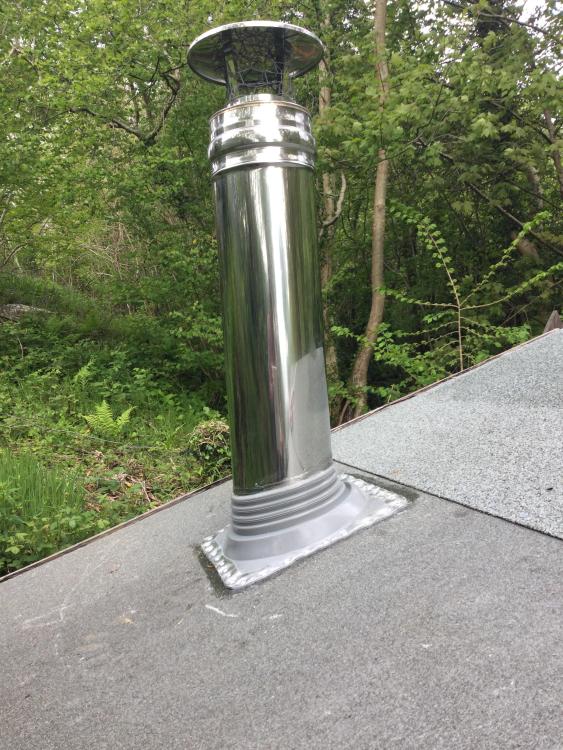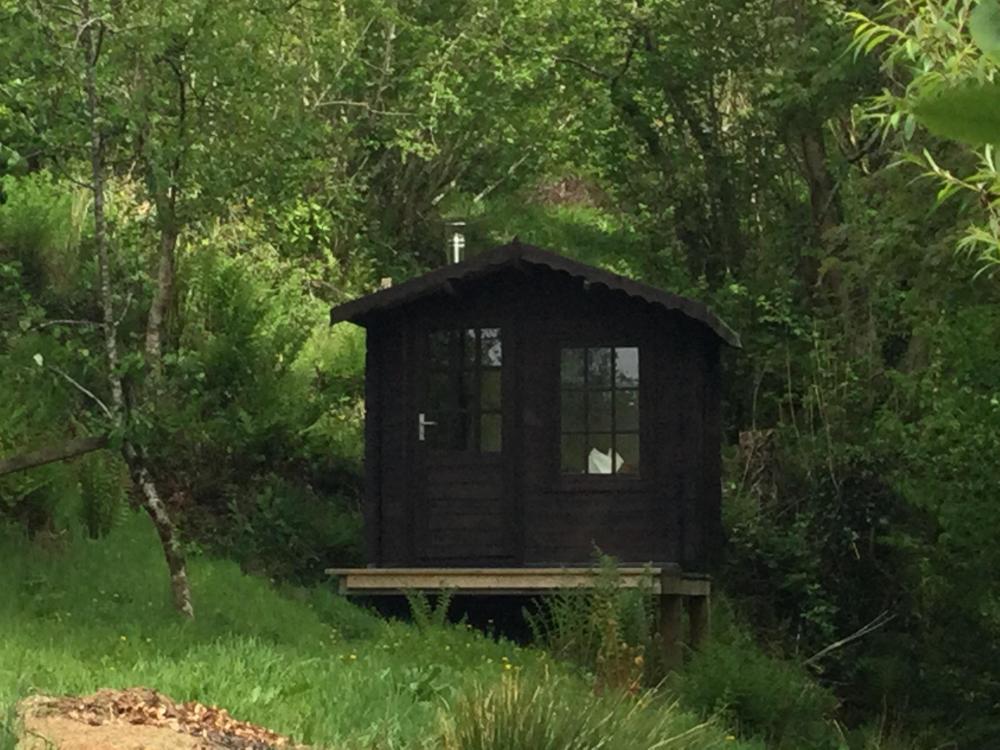Leaderboard
Popular Content
Showing content with the highest reputation on 05/13/22 in all areas
-
2 points
-
It's not about who is quoting you. It's about the property's space heating requirement being 57,225 kWh. On your property, with cost effective measures, you could get this down to around 8,500kWh. Whether it's heated by gas or electricity, the property needs the same amount of heat energy inputted to maintain the required temperature. A 90% efficient gas boiler(s) will meet that requirement with 63,583kWh of gas, or an 481% efficient GSHP will meet it with 11,897kWh of electricity.. @ 7.37p per kWh of Gas and 28.34p per kWh Electricity, the heat pump will be cheaper to run day-to-day, but if you design, engineer and build better and get the 57,225 kWh energy requirement down to 8,500kWh both options would be much cheaper to run and install. I believe there is around a £2,750 per year cost save by improving the energy efficiency of your house. The parts of the build that improve energy efficiency should have a 50-60 year life, but even if you only considered a 25 year life then that's a £68,750 budget for energy efficiency measures.2 points
-
Extremely optimistic Ive just finished doing them myself and quickly went through 50 k On good ground Buying the tank and underground drainage has cost 8 k Concrete and stone in as cost 20 k plus Pipe bedding has cost 2 k Muck away would have cost a fortune But I brought a dozer in to bury the clay £500 plus vat per day Don’t underestimate the GE costs2 points
-
These are what I used. https://www.outsourcedenergy.co.uk/product-category/manifolds/plumbing-manifolds/1 point
-
We had a mare with ours. I ended up redoing all the plumbing myself in Hep. It's an excellent system. We had a 13m run to the kitchen tap so in the end I ran a 10mm pipe to that too. About 5-6l/min flow rate. Not as much as the 8l/min for the cold tap but perfectly useable. It might be a consideration if your distance is large. A manifold radial system works a treat. 10mm for all hot basins straight from as near to the cylinder as possible. It works a treat and the difference is really noticeable compared to the ones I left the 16mm pipe from the plumber in place. Hot water in 5secs instead of 25. Pipe is cheaper than fixings so I don't think there'd be much of a price difference. You get the added benefit of having no fixings hidden anywhere in case of a leak.1 point
-
Take outside tap off first and include isolation and check valve so you cannot contaminate the rest of the system. Have you considered a manifold for cold and hot water, this allows each stream to be isolated. We found this great when we moved in as main parts of the plumbing was complete but ensuites not complete.1 point
-
Fwiw it also means you have a warranty over the design and theoretically industry backed recourse if it doesn't perform or the supplier goes out of business. It may also provide better support/warranty from the manufacturer. Along with avoiding the need to learn how to join pipes this was enough for me to pay the slight premium but totally get for someone more time rich/cash poor the equation would look different. Having choice is useful, which is what smarts about grants and vat reduction incentives tied to taking the "luxury" of supply/install1 point
-
The Quote from Network Power reads as if the £2,819.60 is the whole cost for the new 100kVA Transformer, rather than just my 45kVA portion of it. On top of this there was £3,300 to install 130m of 3 phase cable from the telegraph pole to my kiosk, in a trench that I dug, and make the connection, plus other amounts for reinforcing the local overhead lines from transformer to telegraph pole, +++ Total cost was £7,600.1 point
-
1 point
-
@WilThanks, that was the second response after I phoned them. First response was to complete a G99 application, I then phoned them and the guy said to put it in an email, he seemed surprised when I said I already had and told him what reply I got.1 point
-
I thought it was an error with their new partner portal which went live the same time as the price increase hit. Having asked the question I was specifically told that consumers are now able to buy direct from Loxone.1 point
-
SSEN wanted us to pay 15th/25ths (that's the way they expressed it) of the transformer upgrade cost which came to £3,800. I think that was upgrading a 25KVa to a 50KVa1 point
-
Are they charging you the whole cost of a new 200kVA transformer? For a new 3 phase, 45kVA connection, I was charged £2,819.60 to upgrade the pole transformer from 50kVA to 100kVA, back in 2016. Here's mine. I feel like putting my name on it! Lot's of other charges for the connection. Total bill was over £7K iirc.1 point
-
I am on octopus go and octopus outgoing smart export guarantee. I have only had the first bill for the export and it is separate to the octopus go bill. It is working fine for me. I have 16 panels and (at the moment) 2 batteries. As long as there is some sun during the day i only use about 4KWh and this is all at the cheap night tariff. The result is zero cost per day and this includes the standing charge. Even on a dull day, the bill is no more than 50p, so building up a big credit for the winter use.1 point
-
Yep Muck away is going up daily Massive fines for farmers taking muck away and the plot owner1 point
-
The shape of the house can make a big difference. If you have just BRegs minimum insulation and the design is, for example a series of interconnected cottages with lots and lots of external wall area, your figures might be correct. Given the scale of your energy bills I echo those above and advise you to get some advice from someone with experience in low energy buildings. It's likely their input would pay back in under a year. Someone with passivhaus credentials would probably be a good place to start. Alternatively if you post your plans on here (deidentified of course) there's plenty of knowledgeable heads who would be able to contribute further. In any case, fossil fuels costs will remain high now apparently due to speculative investment deserting the sector (so YouTube tells me?!!!) and the electricity energy mix will become less linked as the grid decarbonises theoretically swinging the price in favour of elec long term. We'll see.........1 point
-
I can't recommend anyone, but given the amount of money involved, I'd be looking at getting at least a handful of quotes to compare. One problem you'll likely face if do go the low-energy route (and if you're building a house of almost 600m2 and are concerned about energy costs, you certainly should!) is that lots of suppliers don't have experience with low-energy houses. They make bad assumptions about insulation U-values when modelling heating requirements, for example, but also don't have any gut feel for how such houses work in practice. Our plumber, for example, insisted that anything less than a 12kW ASHP was going to take so long to heat the hot water that the house would cool down and we'd get cold. But our house only drops a degree or so in 24 hours, so not having the heating on for an hour or two while the tank recharges makes no perceptible difference to the house temperature. As a minimum, you might also want to think about what sort of U-values for walls, ceiling, and floors you want to aim for, as this will inform the heating design parameters.1 point
-
It depends, if its going to end up getting ruined by careless contractors bashing past it for the next 6 months then I would say hold off, you could put the lining/frame in and add protection. Depends how your going to trim round the door ext/int when you would need to get it in, but in most normal situations you could screw in a wooden door lining, made from 2x6 and a temp door. Also depends on things like security. Can you obtain a second hand temp door?1 point
-
Two things. Have the people who have quoted you just used default insulation levels for the UFH i.e. 70mm of insulation? Have they used a default power per square metre number i.e. 25W.m-2 Generally, larger buildings take less energy, on a metre squared basis, than smaller ones. With a building that size, you can get a lot of PV on the flat roof, that would offset a lot of the running costs.1 point
-
Simple, cost effective steps could vastly improve your proposed building's energy efficiency. My property is a modest ~450m². But, as a barn conversion, has a large volume, circa. 1650m³. That would be similar to yours if you had an average 2.8m ceiling height. My space heating and hot water could be comfortably met with an 8kW ASHP. I did oversize my heat pump to 12kW, wanting a faster re-heat on the hot water, but that has proved entirely unnecessary. My annual space heating requirement is around 6,400 kWh. Hot water is around 10,000kWh, which combined, needs around 4,000kWh of electricity at a SCOP of 4.1 point
-
I think the LGs will turn down much more than the others as their plated rating is a bit generous. They all seem to offer 5.5kW at 55 deg, irrespective of the size. To answer your question about where to find the data for other machines, it’s really a case of googling the part numbers and looking for pdfs. I agree with you that the marketing hyperbole from manufacturers and installers isn’t good. No wonder there are so many badly performing installs out there.1 point
-
Bought a 0.5 acre plot with an existing house 8 months ago. Will live in the house while we build on the plot and demolish once complete. House has water, waste and electricity connections. Want to build an energy efficient, accessible, modern (layout not exterior) family home. Selected Potton to work with and currently in the design phase. Targeting planning app by mid-June. ASHP/GSHP (not on gas network), MVHR and possibly solar PV+battery (EV arriving in Sept).1 point
-
1 point
-
To avoid hitting the straps. I always assume it'll be a semi-give-a-feck individual putting these up, so I make an allowance by providing 3rd parties with an 'idiot-proof' solution. For the window reveals you simply install the battens vertically against the straps, eg to the left of the left strap etc, and then just allow the PB to sail over the strap and form the edge. The PB fixed to the window reveal will come out to meet that and a scrim tape and skim ( corner ) bead will finish that off nicely. No need to apply the shaved batten to the strap, as the distance from the vertical batten to the reveal is negligible.1 point
-
1 point
-
But this might be about 30p a day if you were using a heat pump on that cheap tariff, saving 45p a day about £165 per year.1 point
-
I’d expect Italian at 32 Russ If you have a decent area Rocia and Almurad will do a deal Trade is about 40% off showroom price1 point
-
Presumably that’s with the brick plinth and blockwork for internal timber frame walls? honestly- a year ago I’d have fallen off my chair laughing but currently nothing would suprise me.1 point
-
I’ve used compriband tape for a lot of green oak frames. It’s great at adjusting to the movement of the oak. Once you have opened the roll you can cut off what you need and tape the roll together to stop it expanding. Keep it flat and stored well as once it gets uncoiled it’s worthless. They come in varying widths and expansion thickness to suit all sorts of applications. I used to apply it to the frame and compress the glass on to it. On the outside I would stick it to the cover board and compress it onto the glass. You have a few minutes to get it stuck on before it starts expanding. Easy enough when your prepared. Haven’t tried retro fitting into gaps but don’t see it being an issue.1 point
-
Jesus Lord.. that's horrific. Albeit as above lots of factors. Look into an insulated foundation, less steps than conventional and imo cheaper and easy to DIY parts.1 point
-
Seems high. Our foundations have just been dug on our build. All contractor managed: House and garage strip foundations excavated and concreted - £17k Build to DPC on house and garage, drains and scaffold mat - £12k Block and beam to house and concrete slab for garage - £10k Services for water and drainage etc were brought to our site at a previous phase but still our groundworks are less than 40k this is for a double garage and 12m x 11m footprint house.1 point
-
I went to Roccia in Preston, they did a decent deal on volume. About 31 /m on 1mx1m grey marbly things. These are Spanish recitified. Also got some smaller 700x700 in low 20s so if not too much hassle could be worth a visit - best to call first and talk volumes. I found Ashif to be really helpful1 point
-
There is a lot going on here which may belong in different packages. Looking at the fundamentals - Setting out - £not much Digging the strip - 5.5T digger and a dumper for a week with 2 blokes - £1500 - 2k concrete - depending on the depth at whatever rate you have per cubic m - you are probably going to get through £15k of concrete + at current pricing Then you want to get your brickies in to take it to the beam level Groundworkers or whoever (easy to do yourself) to set the below ground drainage and water duct etc) and take out past the foundation - you don't want to be worrying about the septic tank and soakaway at this point Whoever to do the beam and block (again easy to do with a mate or two). I did 2 x 1,650 sq. ft plots plus my 3,000 sq. ft. house with floorspan E-floor Plus for £6,500 including installation (I couldn't be arsed tbh) Brickies to splash Don't see how that adds up to £75k although someone is offering to take away your hassle at a big markup.1 point
-
I found it impossible to get a fixed cost for my groundworks. Too many unknowns. Ended up doing time + materials with a friend and worked out ok. Less than expected and muck away costs were half of what I'd assumed.1 point
-
I’ve just completed our foundations and drainage Muck out stone in All very expensive As on our previous build It’s the only part that you can not accurately predict The only way a company will do a fix quote Is to load the quote1 point
-
Very hard to tell, is there any leveling to do on site, any muck away? Is the foundations deep? Depth of fill required? Is the ground good or bad? What type of treatment plant? And as discussed here a fair bit Location Location, Location makes a massive difference. P.s really nice looking house1 point
-
Think about living in a static on site and selling it, many self builders do this. My build went over time for lots of reasons and I could have done without paying nearly £20K in rent. It would have been great to be able to pop out and do small jobs in the evening or handle deliveries in the evening on winter. Don't underestimate the stress.1 point
-
The couple did well, they put a lot of effort into it rather than paying lots of people and they did a quality job in my opinion. Like it.1 point
-
Not sure he could have foreseen the pandemic leading to massive price increases......he had a beard but I don't think he was a wizard 😉 For an architects house I thought it was rather bland from the outside.1 point
-
He was an architect and couldn't deliver his own house on budget, God help any of his clients.1 point
-
Welcome Non negotiables should be insulation and airtightness. This helps all the time. From my point of view kitchens, bathrooms and lighting are where money can easily be lost for little benefit.1 point
-
'Forewarned is fore-armed' say some. Others 'do your due diligence'. Bottom line - do some background research. Here's mine. (With as many internet links links in as I can to help you with yours) If you can pick a hole I what I write, or see that I've missed something, I'd be so grateful if you could tell me. Method We already know that we have to pile. Does the SI report give a hint at which type of pile? Have a look at this Phase 2 SI Report: Concrete Design page 12, point 7.4: (SI = Soil Investigation) Phase 2 S.I. Report - Bay Horse, Lancaster - G15002b.pdf '... therefore the most practicable foundation type would be a bored pile solution [...] on this basis, concrete in contact with the ground may be designed to ACEC Class DS-1 AC1s of BRE Special Digest 1 - Concrete in Aggressive Ground...' So now we know: they need to be concrete of a certain spec (Help!... no idea what the spec means) and that the piles should be '... sleeved in the upper portion to allow for ongoing settlement of the fill...' (Point 7.3 page 11). What a difference a bit of research makes........ read on There's no substitute for a good SE: one who engages with the customer's needs rather than merely doing the job (PM for details if you like). One line in their email to me suggesting we use a form of piling that is a good deal cheaper than traditional piling (Surefoot). And, in one sentence the SE had potentially saved his fee. They cost about half or less than traditional steel piles. Initial conversations with the company lead me to go and have a look at an installation. Here's what piles (if you can call them that) of that sort look like. So, after checking that there was no conflict of interest between the supplier and the SE, we sent the detailed information to Surefoot. Disappointment. Our ground (see the SI report above) is too 'made-up' . Hmm, back to square minus-a-few. Lesson learned? Keep looking. And that means hours on 'Tinternet. Hours of time apparently wasted. Hours of time which at the time that 'feel' wasted which could be spent doing a million other things . And then a post from @Calvinmiddle suggested I look at national piling contractors. And that lead me to Town and Country Vibro . Instantly another set of unknowns and another research blizzard. Blizzard? Yes, that's how I feel.... I can see a few millimeters in front of my face, I can just about read my compass, I know where I'm going but there might be a crevasse one step in front. What in heaven's name is a stone column? Can it really be as strong as a pile? Why the Heck does the SE specify a safety factor of 2.5(ish) What is 'ground improvement'? How much? Why all the sales guff full of well-know management waffle? What does it actually mean? I really wish there was a Course in every Management Department in every British University which had a compulsory course called Cut_The_Shite_Out _Of_Sales_Speak. It just gets in the way. So, it's hours of YT videos.... bottom feed (my favourite) top feed (mehhhh) vibro (hmmmm) Gordon Bennett is it that quick? A few phone calls later and I'm standing on a building site somewhere in deepest east Lancs with Dan. For reassurance you understand. And a chat with the rig driver. Which lead to a quote. (Cheaper than Surefoot) Which lead to a site meeting at our place, which was well handled: there was a proper check list - whereas up to now a site meeting went something like this... "Well mate y'll need 5 meter piles and we'll do the calcs for ya, 'kin SE's they're a waste of time and money" A swift, polite Bye Bye. Or (and this takes some believing) "Your plot's the same as all the others round here: you'll need four meter piles , and I reckon the jobs going to cost you £20K" He had neither asked for nor seen any SI information - it was offered but he said "No need to bother son". It was the epithet 'son' which really got me. On arrival on site, he got out of the best kept top-line Mercedes I have seen for a long while. I was almost rude in showing the contractor the door. Almost. Piling design: TCV did that, and sent to our SE (Tanners) and that's where we are now. Stone columns (ground improvement) is the method. We need a piling mat: and that's another story.1 point
-
Yup. The solar revolution has begun, sadly. Prices are going up and soon it will get expensive. Problem is, the cheap equipment posse will be matching quotes from the big names and some folk will be sold a dream and get a nightmare.0 points
-
You could, take it to a specialist engineering company and get them to accurately bore holes the complete length of each half. Then get a tie rod and washers and nuts at each end. Tension the tie rod up. Think of it as a pre-stressed structural member. Where is @Gus Potter he could calculate how many turns on a threaded bar will be needed. Or just stick a rawl plug in a hole.0 points
This leaderboard is set to London/GMT+01:00











.jpg.c21f3ac78c9b7efd90cbdcb312744dc5.thumb.jpg.7adcad4c0e384f5ecd7d56b0618df6e5.jpg)







